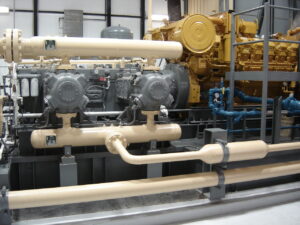Before using any piece of industrial equipment (or any type equipment, for that matter), it’s important to first familiarize yourself with how the gear works. Doing so will allow you to more effectively use and understand the equipment, and keep you safe in the process. This is especially important for folks who may be using a piece of industrial equipment for the first time. Today, we’d like to help you with your next project by showing you just how a dewatering pump works!
What a Dewatering Pump is Used For
Dewatering pumps have many uses in a variety of industries. Some common places you’ll find dewatering pumps are in mines, power-plants, construction sites, industrial mills, or on waterfront properties. A centifugal pump does exactly what it’s name suggests: removes water from a particular location and transports it to another. This way, your home, worksite, or business will be kept dry and under good working conditions.
How it Works
Simply put, a dewatering pump works just like any other pump. Like a centrifugal pump, a dewatering pump utilizes a bladed impeller to begin and maintain the water’s movement. Liquid enters a smaller portion of the impeller, known as the impeller eye. From there, water flow is collected and directed to a cone-shaped discharge nozzle, otherwise known as a diffuser. During this process, the water’s velocity is reduced, and the water flow’s energy is converted to pressure energy. Water is then disposed of at a 7-10 degree angle for efficiency. To facilitate the centrifugal process, an electric motor is most commonly used, although some pumps use different motors.
The short answer to how a dewatering pump works is just like any other pump. A dewatering pump works most similar to a centrifugal pump, and can help remove water from many areas at home or work. Dearing Compressor & Pump offers a number of dewatering pumps for purchase. The next time you’re starting a project, or need equipment for water removal, contact the Dearing team for more information.




